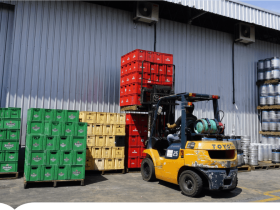
Afghanistan pharmaceutical companies
Afghanistan’s pharmaceutical industry plays a crucial role in meeting the country’s healthcare needs. Despite the challenges faced due to political instability and economic difficulties, Afghanistan has a growing pharmaceutical sector that serves both domestic and international markets. The industry is composed of numerous local manufacturers, importers, and distributors who work to ensure access to essential medicines and health products. Here’s an overview of Afghanistan’s pharmaceutical companies and their role in the healthcare system:
Key Pharmaceutical Companies in Afghanistan
1. Kabul Pharmaceutical Company (KPC)
KPC is one of Afghanistan’s leading pharmaceutical manufacturers. It was established to produce a wide range of generic medicines, including antibiotics, painkillers, and essential over-the-counter drugs. The company has contributed significantly to the local production of pharmaceuticals, reducing the dependence on imported medicines and improving the accessibility of healthcare products.
2. Sina Pharmaceutical Industry
Sina Pharmaceutical Industry is another major local manufacturer. It is known for producing a variety of drugs, including both prescription and non-prescription medicines. The company adheres to international standards for manufacturing, and it has been instrumental in ensuring the supply of affordable medicines within Afghanistan.
3. Afghan German Pharmaceutical Company
A joint venture between Afghan and German companies, Afghan German Pharmaceutical Company focuses on the production of high-quality medications. They specialize in both branded and generic drugs and serve both the domestic market and neighboring countries.
4. Health Net Pharmaceutical
Health Net is known for its commitment to providing affordable and high-quality medicines to the Afghan population. The company produces a wide range of healthcare products, including antibiotics, pain management drugs, and nutritional supplements. Health Net works to ensure that its products are accessible even in remote areas of Afghanistan.
5. Gul Pharmaceutical Company
Gul Pharmaceutical is involved in the manufacturing and distribution of generic medicines in Afghanistan. The company has a robust distribution network and supplies a variety of medicines to hospitals, clinics, and pharmacies across the country.
Challenges Facing the Pharmaceutical Sector
The pharmaceutical industry in Afghanistan faces several obstacles that hinder its growth and stability. Key challenges include:
Political Instability: The ongoing political instability in Afghanistan has disrupted many industries, including pharmaceuticals. Security concerns and changes in government policies have made it difficult for companies to operate smoothly.
Supply Chain Issues: Afghanistan faces logistical challenges due to its geographical location and underdeveloped infrastructure. The distribution of medicines, especially to rural areas, can be delayed or inefficient, affecting healthcare delivery.
Regulatory Challenges: The regulatory framework for pharmaceuticals in Afghanistan is still evolving. There is a need for stronger regulatory oversight to ensure the safety and efficacy of locally produced and imported medicines. However, regulatory challenges, including corruption and inconsistent enforcement of laws, complicate matters.
Dependence on Imports: While local pharmaceutical manufacturing has grown, Afghanistan still relies heavily on imported medicines. This dependence exposes the country to price fluctuations, import delays, and reliance on international trade relations.
Lack of Skilled Workforce: The pharmaceutical sector requires highly trained professionals, including pharmacists, researchers, and manufacturing experts. Afghanistan faces a shortage of skilled personnel due to a lack of proper educational infrastructure in pharmaceutical sciences.
Opportunities for Growth
Despite these challenges, there are significant opportunities for growth in Afghanistan’s pharmaceutical industry:
Increasing Local Production: There is a strong push to encourage local production of medicines to reduce reliance on imports. The Afghan government has introduced policies that aim to support local manufacturers by providing incentives such as tax breaks and subsidies.
Export Potential: Afghanistan has the potential to become a hub for pharmaceutical exports to neighboring countries, particularly Central Asia, where demand for affordable medicines is growing. Companies that can meet international quality standards could tap into these markets.
Improved Healthcare Infrastructure: The ongoing development of healthcare infrastructure in Afghanistan creates opportunities for pharmaceutical companies to expand their product offerings and reach new customers.
Conclusion
The pharmaceutical industry in Afghanistan is a critical sector in the country’s healthcare system, striving to meet the needs of a growing population. While the industry faces significant challenges due to political instability, regulatory issues, and infrastructure deficiencies, there is a growing push for local production and self-sufficiency in medicines. With continued investment in education, infrastructure, and manufacturing capacity, the pharmaceutical industry in Afghanistan has the potential for substantial growth and development, ultimately contributing to better healthcare access for the Afghan population.


Leave a Reply